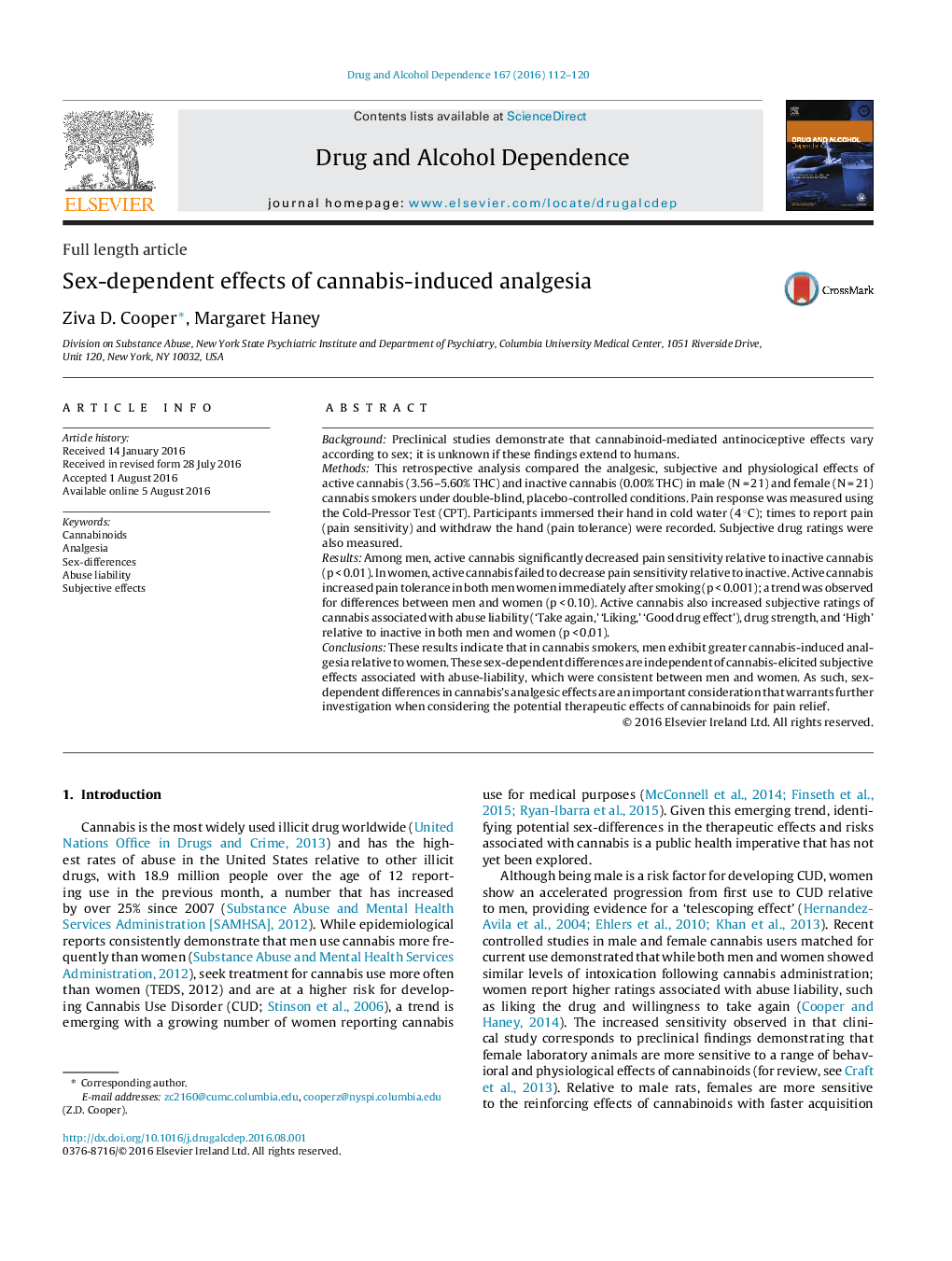| Article ID | Journal | Published Year | Pages | File Type |
|---|---|---|---|---|
| 5120502 | Drug and Alcohol Dependence | 2016 | 9 Pages |
â¢Sex-dependent analgesic and subjective effects of cannabis were assessed.â¢Men and women were matched according to current cannabis us.â¢Cannabis significantly decreased pain sensitivity in men but not women.â¢Subjective effects of cannabis did not differ between men and women.â¢Sex is an important variable to address when investigating cannabis analgesia.
BackgroundPreclinical studies demonstrate that cannabinoid-mediated antinociceptive effects vary according to sex; it is unknown if these findings extend to humans.MethodsThis retrospective analysis compared the analgesic, subjective and physiological effects of active cannabis (3.56-5.60% THC) and inactive cannabis (0.00% THC) in male (N = 21) and female (N = 21) cannabis smokers under double-blind, placebo-controlled conditions. Pain response was measured using the Cold-Pressor Test (CPT). Participants immersed their hand in cold water (4 °C); times to report pain (pain sensitivity) and withdraw the hand (pain tolerance) were recorded. Subjective drug ratings were also measured.ResultsAmong men, active cannabis significantly decreased pain sensitivity relative to inactive cannabis (p < 0.01). In women, active cannabis failed to decrease pain sensitivity relative to inactive. Active cannabis increased pain tolerance in both men women immediately after smoking (p < 0.001); a trend was observed for differences between men and women (p < 0.10). Active cannabis also increased subjective ratings of cannabis associated with abuse liability ('Take again,' 'Liking,' 'Good drug effect'), drug strength, and 'High' relative to inactive in both men and women (p < 0.01).ConclusionsThese results indicate that in cannabis smokers, men exhibit greater cannabis-induced analgesia relative to women. These sex-dependent differences are independent of cannabis-elicited subjective effects associated with abuse-liability, which were consistent between men and women. As such, sex-dependent differences in cannabis's analgesic effects are an important consideration that warrants further investigation when considering the potential therapeutic effects of cannabinoids for pain relief.
